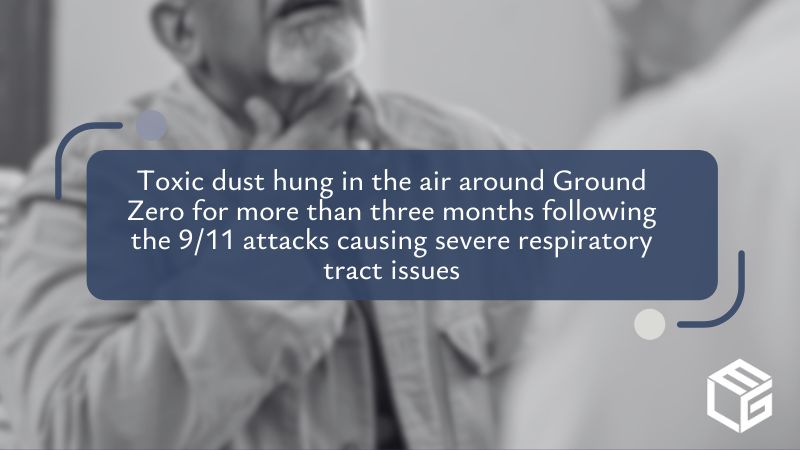-
About »
- Insulin MDL
-
Cases »
- Diseases
- Testimonials
- Government
- Contact
- Get Help Now
-

Interstitial lung disease is a group of over 200 chronic lung disorders. It includes conditions like chronic asthma, chronic sinusitis, and pulmonary fibrosis. The 9/11 attacks released a toxic cloud of dust containing harmful chemicals. Tragically, many individuals exposed to this toxic environment developed serious respiratory problems, including ILD.
If you were present at the World Trade Center, the Pennsylvania crash site, or the New York City Exposure Zone and have been diagnosed with ILD, you may be eligible for financial claim through the 9/11 Victim Compensation Fund.
Claim ApplicationStudies have shown that rescue and recovery workers exposed to the toxic dust faced a substantially higher risk of developing ILD compared to the general population. ILD is a term for a group of lung conditions characterized by inflammation and progressive scarring of the lung tissue. Symptoms of ILD include:
If you were exposed to the toxic cloud released during the 9/11 attacks and have since developed ILD, you may be eligible for compensation from the 9/11 VCF. The amount of compensation is determined by a formula that considers:
While the maximum payout for respiratory illnesses is $90,000, the actual amount you receive will depend on the severity of your condition.
For over three decades, our legal team has been fighting for the rights of those harmed by toxic exposure. If you developed interstitial lung disease due to exposure to the toxins released during the 9/11 attacks, our attorneys are here to help. To help you file a claim, we'll need proof of your presence in the Exposure Zone and your medical records confirming your diagnosis. Once we've confirmed your eligibility, we'll work to secure the maximum compensation on your behalf.